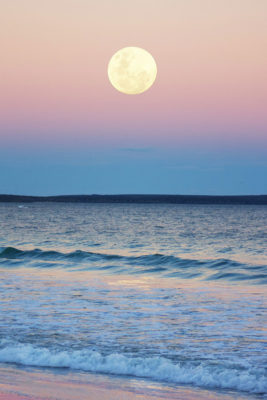Summer Solstice 2024: What Is It & How To Celebrate
By
10 months ago
The history and traditions of the astronomical event

The sun has finally shown its face, just in time for the summer solstice. Today, 20 June 2024, is the longest day of the year, signalling the official beginning of summer on the astronomical calendar. Over the years, the June solstice has inspired many festivals and traditions – but why is the event so significant? Read on for everything you need to know about the age-old celebration.
Summer Solstice: Everything You Need To Know
What Is The Summer Solstice?
Two solstices take place each year – one in winter, and one in summer. The summer solstice occurs when the earth’s axis is tilted at its closest point from the sun, above the Tropic of Cancer. This means that in the northern hemisphere, the sun is at its highest point in the sky, hence why we have the maximum hours of sunlight. The word ‘solstice’ derives from the Latin words for sun (sol) and to stand (sistere).
When Is The Summer Solstice?
The summer solstice occurs between 20 and 22 June, differing slightly because the calendar year doesn’t exactly match the time it takes the Earth to orbit the Sun. This year, the solstice occurs on Thursday 20 June – specifically at 9.51 BST, though the whole day is usually celebrated. In the UK, you can expect at least 16 hours of sunlight today.

GettyImages
How Is It Celebrated?
Since prehistoric times, the summer solstice has inspired midsummer festivities and rituals. Historically, the event was particularly important for Nordic communities, where seasonal changes in sunlight were dramatic. In the Neolithic era, the day was marked with bonfires – intended to boost the sun’s strength – and it’s thought stone circles were built to align with the sun’s movements.
Nowadays, the day is celebrated with picnics, singing, parties and more. The UK’s biggest solstice event takes place at Stonehenge, where people from all over the world join to watch the sun rising in line with the stones. Festivities also take place at places like Glastonbury Tor, Rollright Stones in Oxfordshire, Little Moreton Hall in Cheshire, and Ben Nevis, the UK’s highest mountain.
For many people, summer solstice has spiritual significance, representing new beginnings, enlightenment and creativity, hence why it’s an important day on the yoga calendar. Many yogis mark the day by practising a yoga mala, which is 108 sun salutations in a row.
Is Summer Solstice The Same As Midsummer?
Although they are often used interchangeably, summer solstice and Midsummer’s Day are actually two different events. Midsummer’s Day occurs annually on 24 June, and is one of the four Quarter Days on the UK Legal Calendar, alongside Lady Day (25 March), Michaelmas (29 September) and Christmas Day (25 December).






